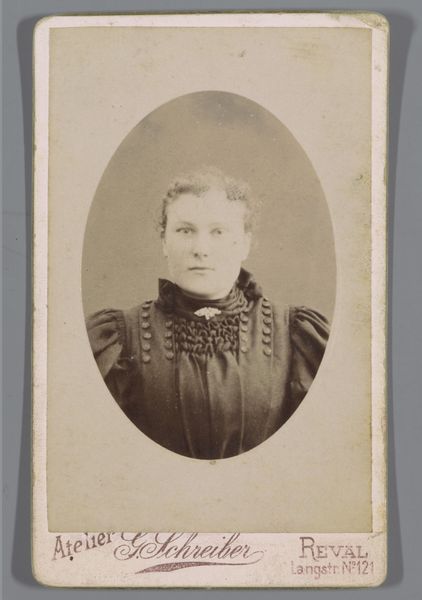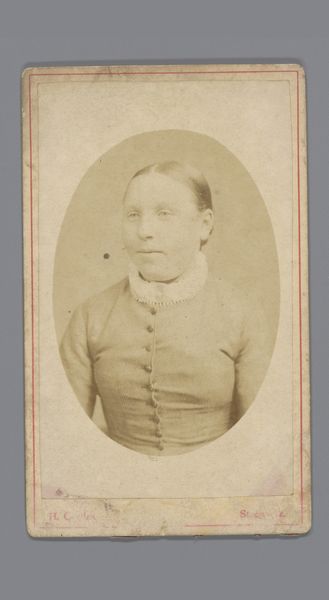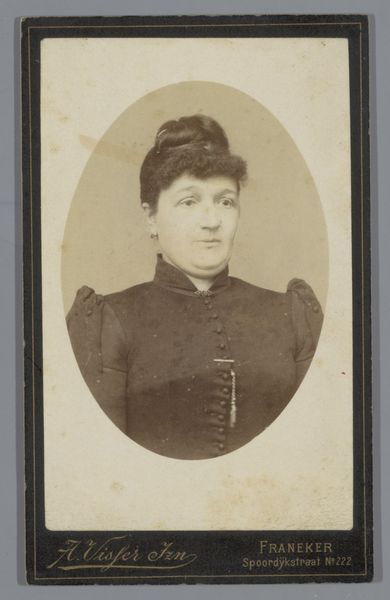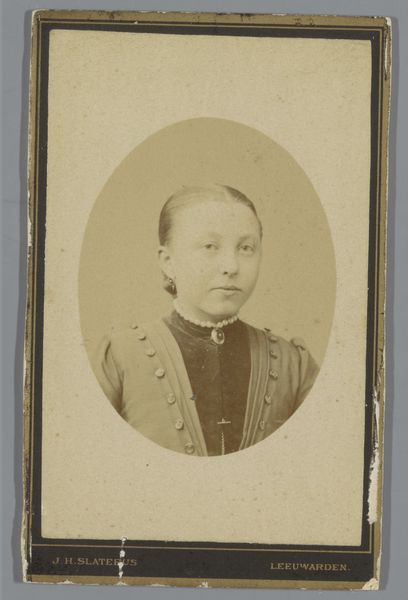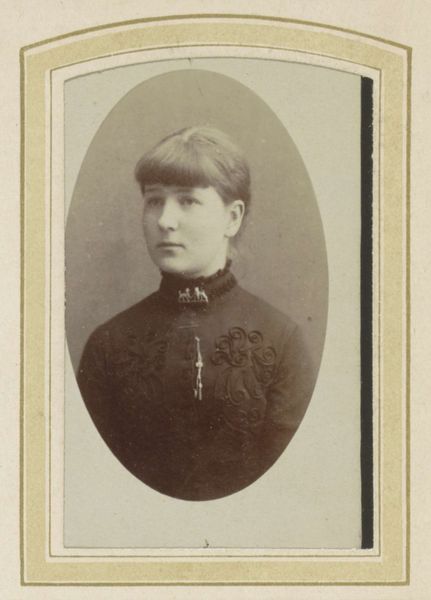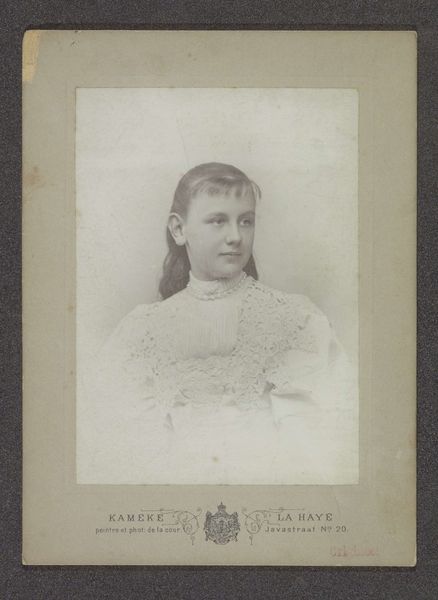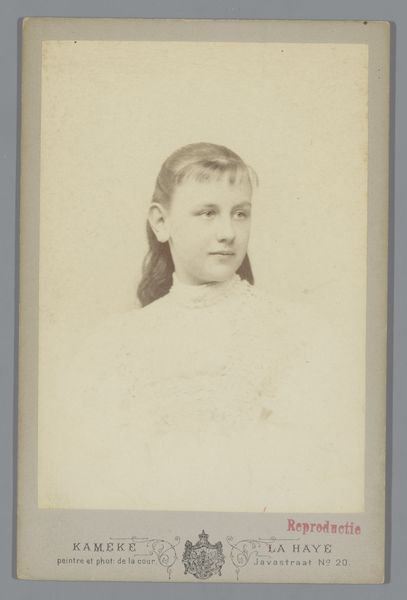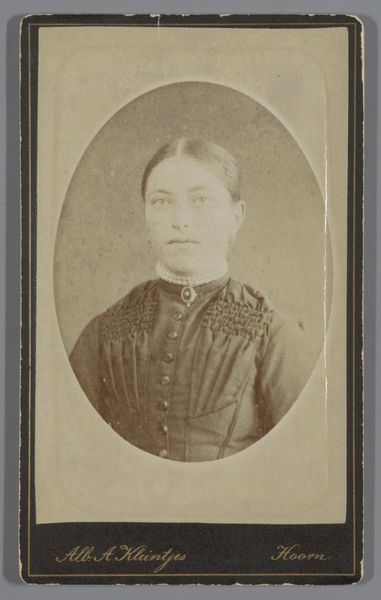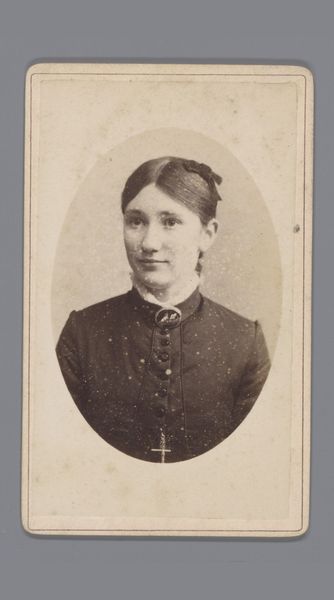
paper, photography, gelatin-silver-print
#
portrait
#
self-portrait
#
paper
#
photography
#
historical fashion
#
gelatin-silver-print
#
19th century
#
paper medium
Dimensions: height 104 mm, width 64 mm
Copyright: Rijks Museum: Open Domain
Editor: This is an intriguing gelatin-silver print titled "Portret van een onbekende vrouw," created between 1878 and 1905 by Johannes Ephraim. I am struck by the formal attire and the subject's direct gaze; there's something both familiar and distancing about her. How do you interpret the public role of portraiture in this historical context? Curator: That’s a great observation. Looking at this portrait through a historical lens, we need to consider the rise of photography as a more accessible medium. Portraits became less exclusive to the wealthy elite. The woman's gaze and posture, while seemingly simple, are carefully constructed. To what extent do you think photographic studios were influencing social presentation through images? Editor: I hadn't considered that specifically, but it makes sense! It feels like these images become records and enforcers of specific social behaviors or class expectations, made accessible at scale. Do you think that is limiting? Curator: Exactly. There was increasing power of photographic images as carriers of cultural values and ideas. For one, you would assume that these portrait photographs would begin reflecting an image of ‘who can afford it’ and start mimicking behavior of upper classes to appeal more in sales. Can we truly know how "onbekende vrouw’ truly lived if that context in the image is now altered? How do you interpret this change in social power structures of art? Editor: That gives me a new way to think about it. I always took such photographs to be somewhat straightforward documents of a moment, but considering their place in consumer culture of the time reframes how I look at the relationship of the work to both its subject and audience. Curator: It’s this intersection of social access, studio conventions, and the subject's self-presentation that makes these portraits such rich documents of social and cultural history. What would you want viewers to think about after seeing this artwork? Editor: Perhaps a consideration of how the proliferation of image-making impacted notions of self-representation and how power structures operate. Curator: Agreed. The layering effect when combining art historical study and observation really highlights so much more about a period in time, than the single image alone.
Comments
No comments
Be the first to comment and join the conversation on the ultimate creative platform.

